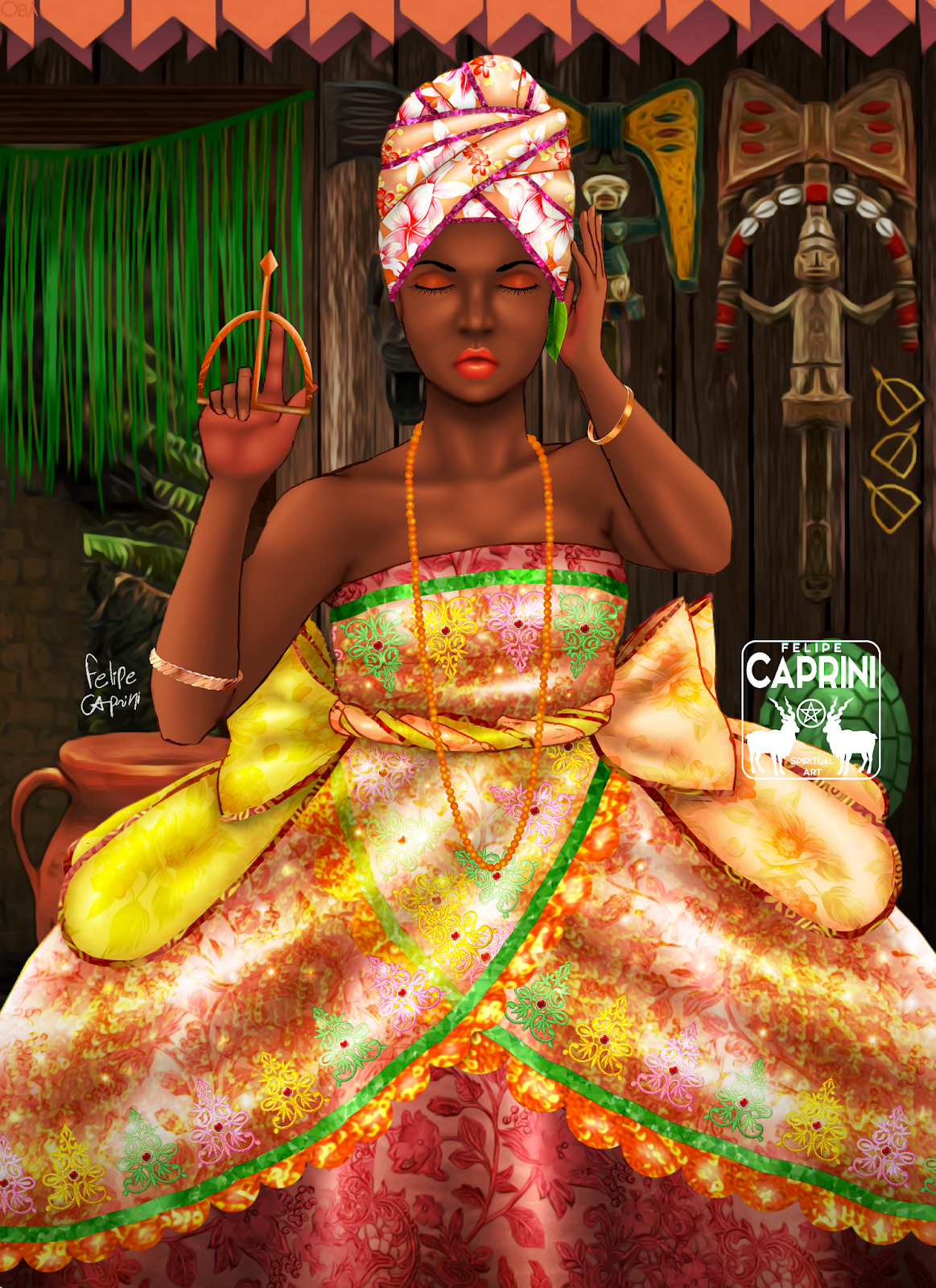
Obba Nani
The Orisha of the Home, Who Fights with a Sword.
Obini Alaafin Òyó!
Though many will praise Shangó for the strength of his sword, and Oyá for her skill with a cutlass, it was the delicate Orisha of the home, Obba Nani, who taught them both how to use them. The first and legitimate wife of Shangó, Obba Nani is the Orisha of matrimony and the hearth. She is also said to have created the first maps, invented writing, and is connected to commerce.
In Nigeria, she is the deity of the Oba River that connects to the Òsun (Oshún) River. Perhaps it is for this reason that Obba and Oshún are deeply entwined, with many Lucumí houses initiating children of Obba through Oshún. But it is a relationship that is not without its troubles, as one of the patakis about Obba tells us.
In the Odú Ejiogbe’she (8-5), Shangó had three wives: the warrior Oyá, the seductive Oshún, and his original wife, Obba Nani. Obba saw Shangó paying so much attention to her co-wives that she began to doubt herself. Sure, she could handle a sword or machete as well as any man, but it was only with Oyá at his side that Shangó would ride into battle. And though Obba was very beautiful, the sweet and sexy charm of Oshún seemed to cast a spell over Shangó whenever he was in her presence. How could she compete? When her co-wives noticed the pit of despair Obba was falling into over her jealous love for Shangó, one of them decided to play a cruel trick on her. Some say it was Oshún, others say it was Oyá. This wife, pulling her head wrap down over her ears, approached Obba and told her that the secret to her success with Shangó was simply that they worked magic on him. Why it was so easy! All she had to do was make him a very special soup. Obba, desperate for a solution, did exactly as she was told to prepare the soup. When she served it to Shangó, he excitedly sat down to eat it but shot right out of his seat when he saw a human ear floating on top. He looked in horror at Obba Nani, who was holding the left side of her head wrap which was slowly soaking through with blood. He saw how she had mutilated herself and was disgusted. Embarrassment washed over Obba as she realized she had been humiliated, and she ran from the palace in shame, only stopping in the one place Shangó will never go: the cemetery.
It’s said that in the cemetery, Obba Nani learned to truly love and respect herself. She would never be tricked again into hurting herself for the love of another. In her new role in the cemetery, Obba Nani records the names of the death as they head for the grave. This image of Obba is surely creole, as family members are buried not in cemeteries but inside the family compound in traditional Yoruba culture.
Obba Nani is a beautiful, delicate, and powerful Orisha who brings stability to the home and defends the rights of women and children. From her, we can all learn the important lesson to love ourselves and never harm ourselves over love.
Moforibale Obba Nani!
